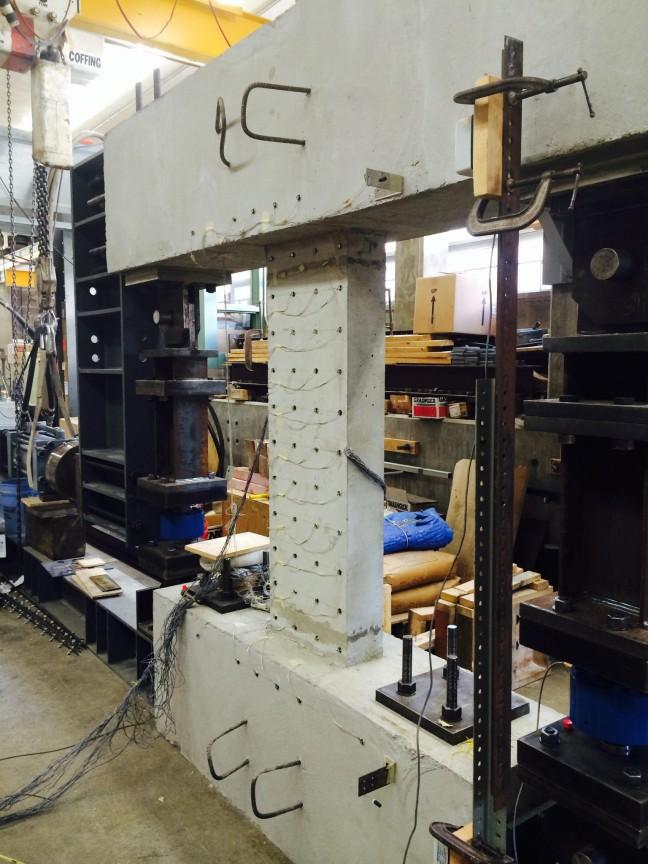An innovation from University of Wisconsin is impressive not only for its ability to make buildings better resistant to earthquakes, but also for its simplicity.
A new design of fiber-reinforced concrete beams could be perfected in the coming years as UW professor Gustavo Parra-Montesinos works to get it incorporated in the American Concrete Institute’s building code.
These fiber-reinforced concrete beams are a fairly new design and not yet incorporated in ACI’s code. The beams are made of concrete mixed with tiny steel fibers with little hooks on the end that help interlock the concrete and fibers, Parra-Montesinos said. These fibers not only help buildings to better withstand an earthquake, but are also highly regarded for their simplicity.
Parra-Montesinos’ design helps create more support for concrete walls and beams. While concrete is very good at compression, it is brittle and weak in terms of retention, and will crack more if a earthquake hits, Parra-Montesinos said. Incorporating these steel fibers creates small reinforcements that help to withstand a natural disaster, Parra-Montesinos said.
“Due to the fibers being mixed with the concrete, our design is relatively simple,” Parra-Montesinos said. “That is what got the attention of practicing engineers, the simplicity of the design.”
This fiber-reinforced concrete design first began in 2000 with his fellow colleagues at University of Michigan, Parra-Montesinos said. He has also been working with UW doctoral student, Angel Perez-Irizarry, to test the fiber-reinforced concrete coupling beams to see their ability to withstand an earthquake-type impact.
Parra-Montesinos said he has been working to create a standard for how many fibers are needed to still have a sturdy, well-performing design. But by reducing fibers in the concrete, more money can be saved.
This design has already gotten recognition by companies like Cary Kopczynski & Company who have already implemented this design in their buildings. Principal engineer Joe Ferzli said Parra-Montesino’s design gives an alternative method to two already in ACI’s codes. The two types of designs for concrete walls are either horizontal or diagonal beams. Diagonal beams have 30 percent more capacity than horizontal ones, but are more difficult to build.
“The fiber linked beam gives us a third option with the same capacity as a diagonal beam, but with less congestion problems and less risk in the field that diagonals may pose,” Ferzli said.
Cary Kopczynski & Company first implemented Parra-Montesino’s design back in 2013 with The Martin in Seattle, Washington, Ferzli said. Since then, they have also looked to implement the fiber-linked beams in two twin towers that will have hundreds of coupling beams. As they continue to get good feedback from the contractors, the fiber-reinforced design is quickly becoming their preferred strategy.
Due to the fiber-reinforced design not yet being in the codes, engineers must first do a performance-based analysis on the buildings and also get approval with cities and owners of the buildings, Ferzli said.
The fact engineers are already seeking out his design, despite it not being in the code, shows how important it is. As he works to create a standard for the fibers needed, Parra-Montesinos said, he hopes his design will be included in the next round of ACI codes in 2019.
“The industry has shown a strong interest in this, which has made it clear that there is a need for code provisions,” Parra-Montesinos said.





















